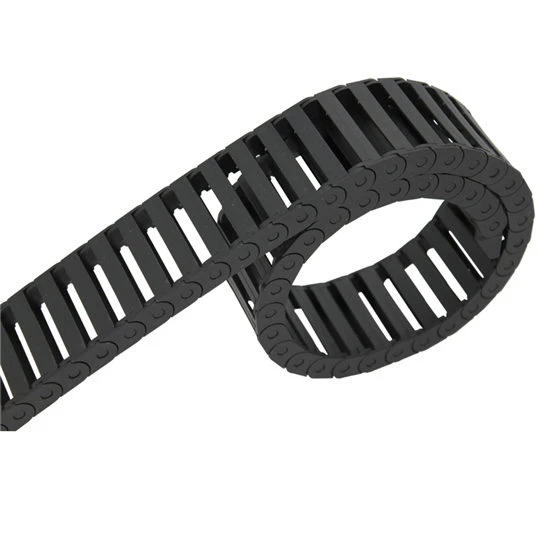miniature cable carrier
Understanding Miniature Cable Carriers
Miniature cable carriers, also known as drag chains, are essential components in modern machinery and automation. These meticulously designed protective systems are used to organize and guide cables and hoses, ensuring that they remain free from wear and tear during movement. As industries increasingly turn towards automation and robotics, the relevance of miniature cable carriers is more pronounced than ever.
The primary function of a cable carrier is to provide a protective conduit for moving cables and hoses. In environments where machinery operates with frequent motion, such as robotics, CNC machines, and assembly lines, unprotected cables can become tangled or damaged. The miniaturization of equipment has led to a demand for smaller carrier systems that can fit into confined spaces without compromising strength or durability.
Miniature cable carriers are engineered for versatility. They are available in various sizes, shapes, and materials, allowing them to accommodate different types of cables and hoses. Most are constructed from lightweight yet resilient plastics or metals, which enhance their longevity while reducing the overall weight of the assembly. This is particularly important in applications involving rapid movement or where weight is a critical factor.
Installation of miniature cable carriers is designed to be user-friendly. They can be readily mounted on a range of equipment, offering flexibility for engineers and designers. Many carriers have a modular design, enabling easy customization based on specific requirements. Additionally, the ease of installation means reduced downtime for equipment, which is vital in a fast-paced manufacturing environment.
miniature cable carrier

In terms of functionality, miniature cable carriers excel in maintaining organized layouts. By channeling cables and hoses, they prevent tangling, which can lead to operational failures or costly downtimes. This organization not only prolongs the life of cables but also simplifies maintenance and replacement processes. When cables are properly arranged, diagnosing issues becomes easier, facilitating swift repairs and minimizing disruption.
The durability of miniature cable carriers is another key aspect that enhances their appeal. High-quality carriers can withstand harsh environments, including exposure to chemicals, extreme temperatures, and abrasive conditions. This resilience is particularly beneficial in sectors such as automotive manufacturing, material handling, and packaging, where equipment is often subjected to rigorous operating conditions.
In the realm of automation and robotics, the demand for heightened efficiency and reliability has driven the evolution of miniature cable carriers. Innovations in design, such as improved wear resistance and reduced friction, ensure that these carriers can perform efficiently over an extended lifespan. Additionally, advancements in technology have led to the introduction of smart carriers equipped with sensors, enabling real-time monitoring of the cable condition and overall system health.
In conclusion, miniature cable carriers represent a vital component in modern industrial and automated systems. Their ability to protect and organize cables and hoses not only enhances operational efficiency but also contributes to the overall reliability of machinery. As technology continues to advance and industries increasingly prioritize automation, the role of miniature cable carriers will undoubtedly grow, serving as an indispensable asset in achieving streamlined and effective processes. Whether in robotics, manufacturing, or any application involving moving parts, their significance in ensuring seamless operation cannot be overstated.








